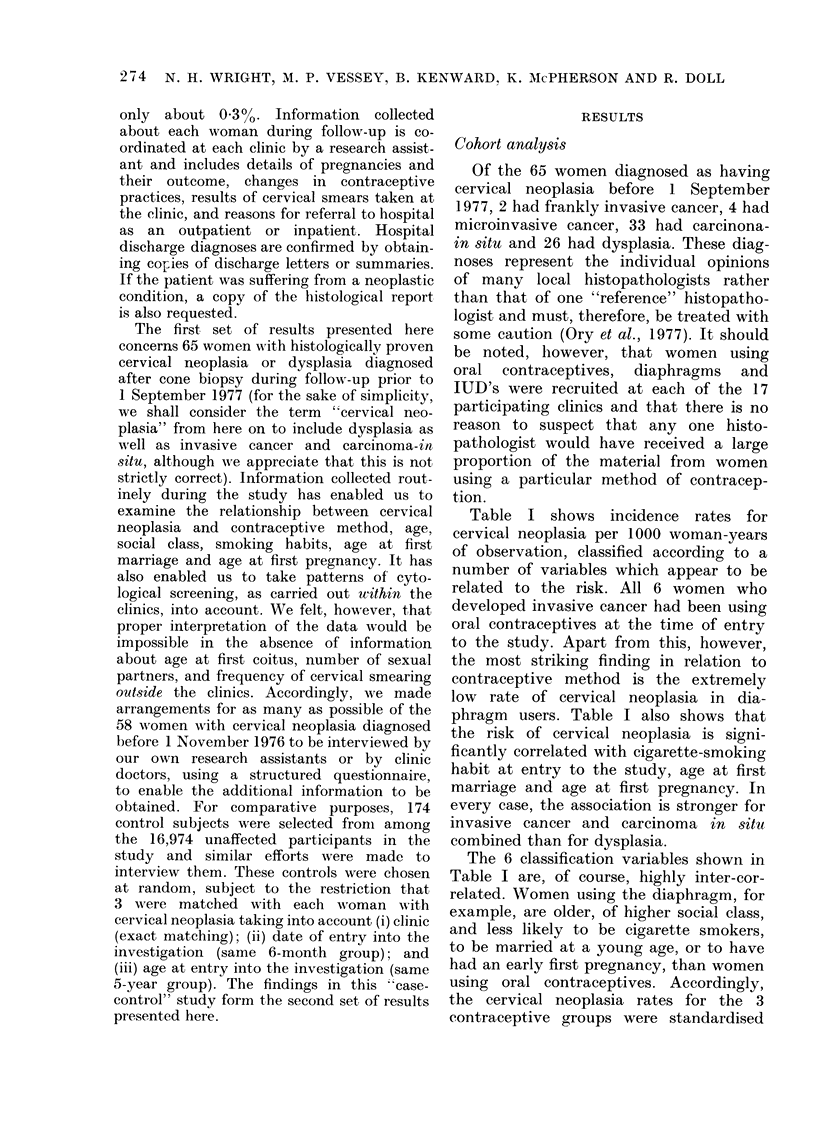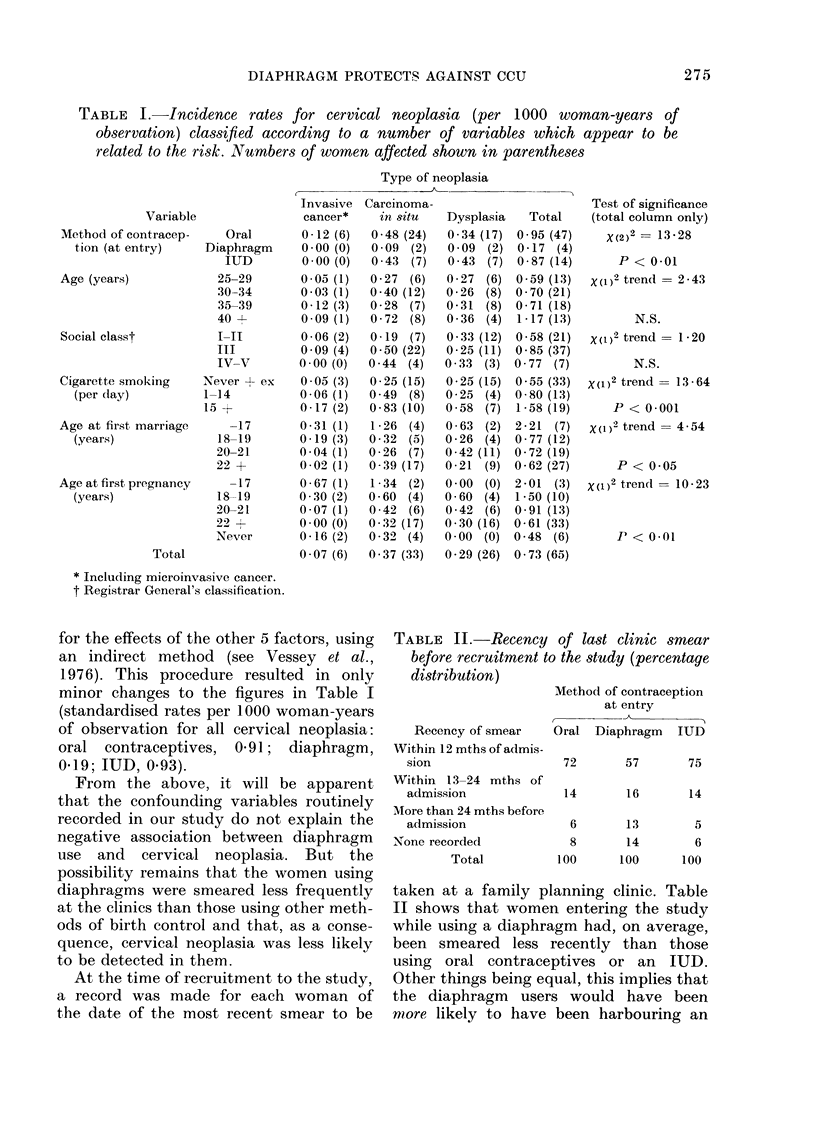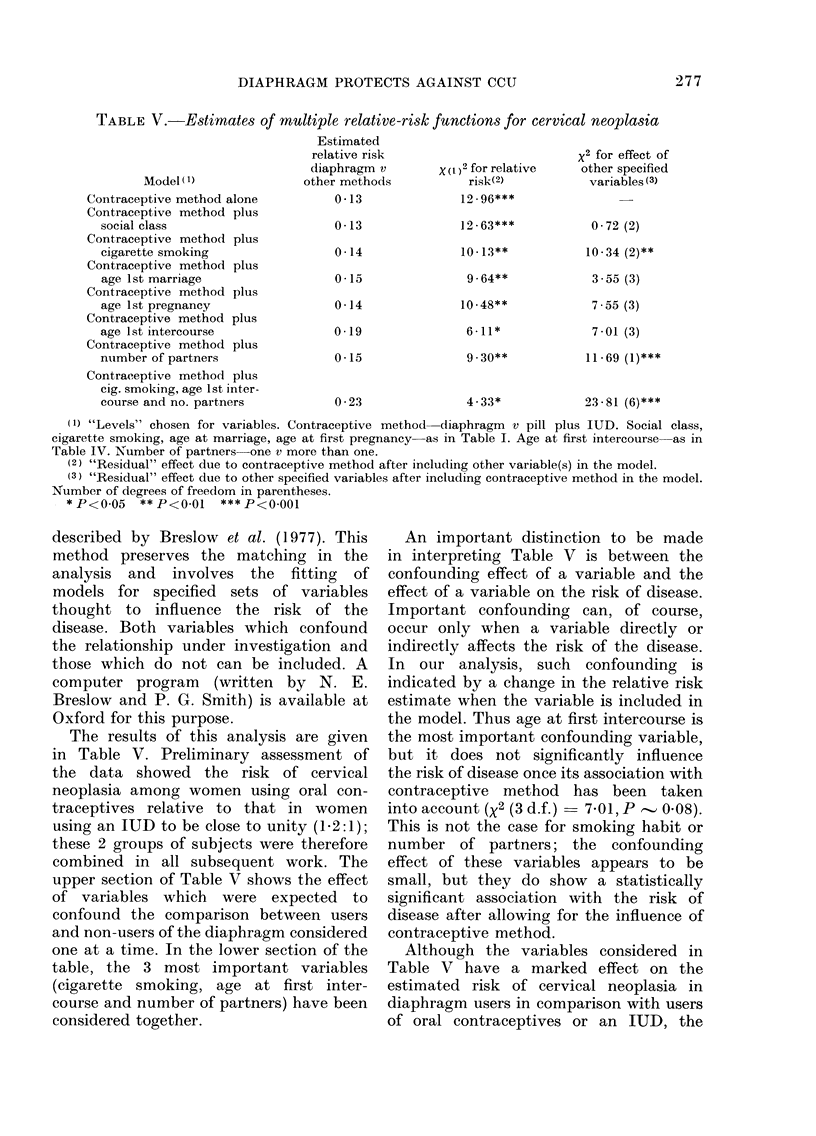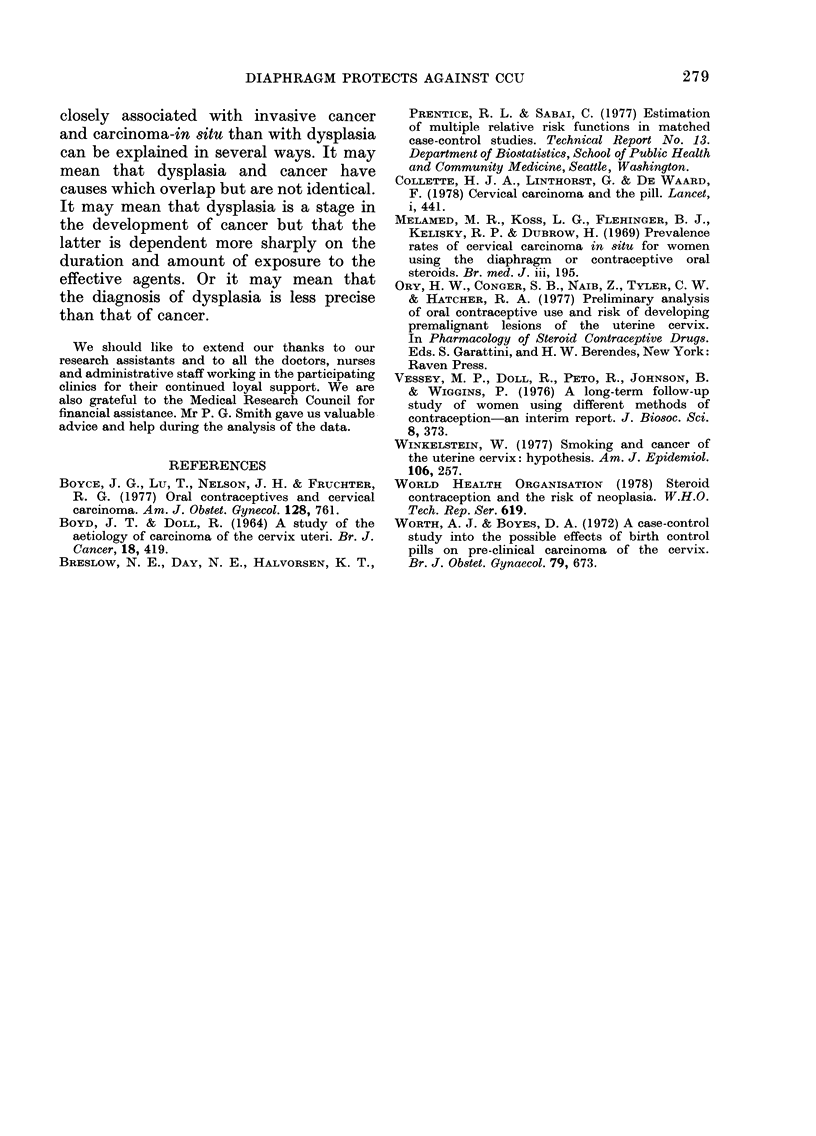Abstract
Among the 17,032 women included in the Oxford-Family Planning Association contraceptive study, 65 developed biopsy proven cervical neoplasia (including dysplasia) prior to 1 September 1977. The incidence rate in diaphragm users (0.17 per 1000 woman-years of observation) was much lower than the rates in oral contraceptive users or intrauterine device users (0.95 and 0.87 respectively). This difference could not be explained in terms of confounding variables, nor was it attributable to a lower frequency of cervical smearing among diaphragm users within the clinics. Detailed information about age at first intercourse, numbers of sexual partners and the frequency of cervical smearing outside the clinics was obtained from 52 of the women with cervical neoplasia and 139 matched controls. Diaphragm users were less likely to have had coitus at an early age and had had materially fewer sexual partners than users of the other two methods of contraception. After adjusting for the effects of these variables, however, the risk of cervical neoplasia in diaphragm users was still only about one quarter that in the users of the other methods. Patterns of smearing varied little between users of the various contraceptive methods. Smoking emerged as a major "risk factor" for cervical neoplasia in this study. This probably implies that the smoking habit reflects some important aspect of sexual behaviour relevant to the production of the disease that we have been unable to measure.
Full text
PDF






Selected References
These references are in PubMed. This may not be the complete list of references from this article.
- BOYD J. T., DOLL R. A STUDY OF THE AETIOLOGY OF CARCINOMA OF THE CERVIX UTERI. Br J Cancer. 1964 Sep;13:419–434. doi: 10.1038/bjc.1964.49. [DOI] [PMC free article] [PubMed] [Google Scholar]
- Boyce J. G., Lu T., Nelson J. H., Jr, Fruchter R. G. Oral contraceptives and cervical carcinoma. Am J Obstet Gynecol. 1977 Aug 1;128(7):761–766. doi: 10.1016/0002-9378(77)90717-7. [DOI] [PubMed] [Google Scholar]
- Collette H. J., Linthorst G., de Waard F. Cervical carcinoma and the pill. Lancet. 1978 Feb 25;1(8061):441–442. doi: 10.1016/s0140-6736(78)91227-8. [DOI] [PubMed] [Google Scholar]
- Melamed M. R., Koss L. G., Flehinger B. J., Kelisky R. P., Dubrow H. Prevalence rates of uterine cervical carcinoma in situ for women using the diaphragm or contraceptive oral steroids. Br Med J. 1969 Jul 26;3(5664):195–200. doi: 10.1136/bmj.3.5664.195. [DOI] [PMC free article] [PubMed] [Google Scholar]
- Vessey M., Doll R., Peto R., Johnson B., Wiggins P. A long-term follow-up study of women using different methods of contraception--an interim report. J Biosoc Sci. 1976 Oct;8(4):373–427. doi: 10.1017/s0021932000010890. [DOI] [PubMed] [Google Scholar]
- Winkelstein W., Jr Smoking and cancer of the uterine cervix: hypothesis. Am J Epidemiol. 1977 Oct;106(4):257–259. doi: 10.1093/oxfordjournals.aje.a112460. [DOI] [PubMed] [Google Scholar]
- Worth A. J., Boyes D. A. A case control study into the possible effects of birth control pills on pre-clinical carcinoma of the cervix. J Obstet Gynaecol Br Commonw. 1972 Aug;79(8):673–679. doi: 10.1111/j.1471-0528.1972.tb12899.x. [DOI] [PubMed] [Google Scholar]


